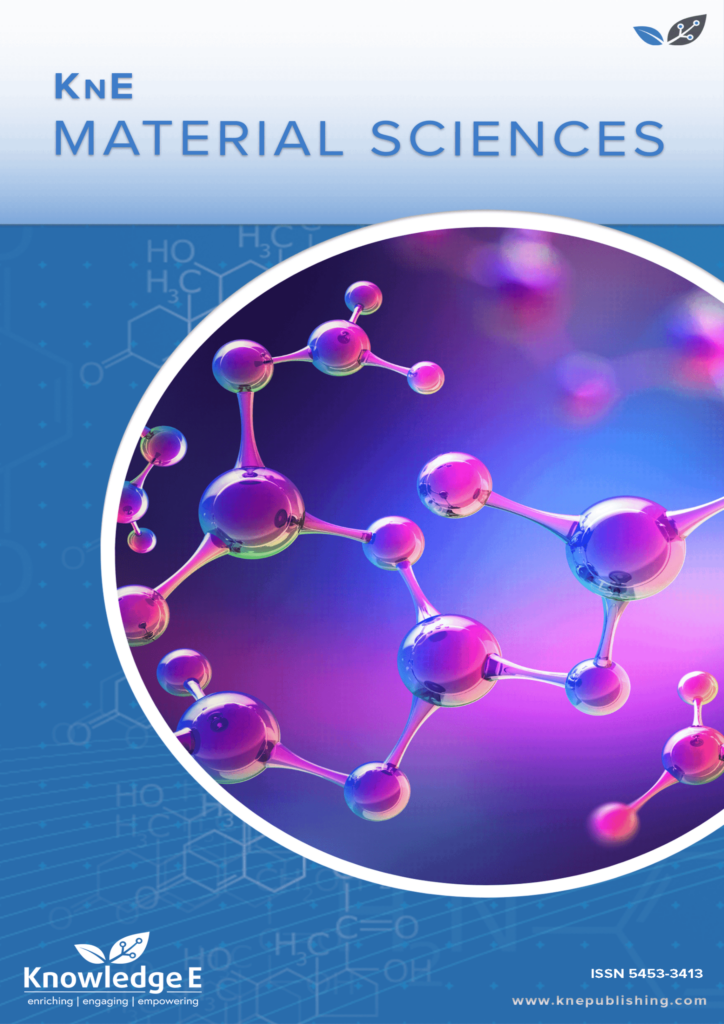
KnE Material Sciences
ISSN: 2519-1438
The latest conference proceedings on physical materials, energy materials, electrical materials.
Evaluation of Porous TiNi-based Alloy as a Scaffold for Liver Tissue Engineering
Published date:Jul 17 2017
Journal Title: KnE Material Sciences
Issue title: Shape Memory Biomaterials and Implants in Medicine (SMBIM)
Pages:140-148
Authors:
Abstract:
Complex analysis of development of cells of liver – hepatocytes in the biocompatible scaffold, fabricated of porous-permeable TiNi-based alloy has been performed. Specific stages of development of cellular population in pores of scaffold are displayed in the present investigation. The stepwise characteristic of developing of hepatocytes in porous-permeable structure from TiNi-based alloy is demonstrated. Nanoporous surface of pores in incubator permit cells to be reliably fixed and produce growth to cellular colonies, and porous-permeable structure of scaffold allows penetrating to nutrients from environment during all time of investigation in vivo. Examination on CCl4-induced hepatitis has displayed effective antitoxic activity of population of hepatocytes in scaffold from TiNi-based alloy and their prolonged effect.
References:
[1] C. Booth., T. Soker, P. Baptista, C.L. Ross, S. Soker, U. Farooq et al, Liver bioengineering: current status and future perspectives. World J Gastroenterol. 18 (47) (2012) 6926–6934.
[2] K. Asonuma, J.C. Gilbert, J.E. Stein, T. Takeda, J.P. Vacanti, Quantitation of transplanted hepatic mass necessary to cure the Gunn rat model of hyperbilirubinemia. J Pediatr Surg. 27 (3) (1992) 298–301.
[3] A. Dhawan, J. Puppi, R.D. Hughes, R.R. Mitry, Human hepatocyte transplantation: current experience and future c hallenges. Nat Rev GastroenterolHepatol. 7 (5) (2010) 288–298.
[4] L.H. Toledo Pereyra, S. Dewan, V.K. Mittal, D.A. Gordon, Clinical pancreas transplantation. Complete review of eight years experience. Arch. Surg. Vol. 55, N 9 (1991) 576–581.
[5] S.C. Kim, Y.M. We, J.H. Lee, Impact of purification of pancreas islet in canine intraportal islet transplantation Transpl.Proc. Vol. 30, N 7 (1998) 3423–3424.
[6] P.E. Lacy Islet transplantation in diabetes mellitus. Diabetes. Vol. 111, N 3. (1990) 1–3.
[7] K.A. Soltys, A. Soto-Gutierrez, M. Nagaya, K.M. Baskin, M. Deutsch, R.Ito et al,Barriers to the successful treatment of liver disease by hepatocyte transplantation. J. Hepatol. 53. (2010) 769–774.
[8] K. Ohashi, F. Park,·M.A.Kay, Hepatocyte transplantation: clinical and experimental application. J. Mol.Med. 79. (2001) 617–630.
[9] G. Pietrosi, G.B. Vizzini, S. Gruttadauria, B. Gridelli,Clinical applications of hepatocyte transplantation. World J. Gastroenterol. 7. (2009) 2074.
[10] M.P. Van de Kerkhove, R. Hoekstra, R.A. Chamuleau, T.M.van Gulik, Clinical application of bioartificial liver support systems. Ann. Surg. 240 (2004) 216–230.
[11] C.S. Ranucci, A. Kumar, S.P. Batra, P.V.Moghe, Control of hepatocyte function on collagen foams: Sizing matrix pores toward selective induction of 2-D and 3-D cellular morphogenesis. Biomaterials. 21. (2000) 783–793.
[12] G. Chen, T. Ushida, T. Tateish, Scaffold design for tissue engineering. Macromol Bioscience. 2 (2002) 67–77.
[13] V.E. Gunther, V.N. Khodorenko, O.V. Kokorev et al. Medical materials with shape memory. Medical Materials and Implants with Shape Memory. Ed. VE Gunther. - Tomsk: Publishing house "NPP MIC". T.1 (2011) 534.
[14] O.V. Kokorev, V. N. Hodorenko, V. E. Gunther et al,Porous TiNi-based alloy scaffold for cell tissue engineering. J AdvSci Res. 5(3) (2014) 01–06.
[15] O.V. Kokorev, V. N. Hodorenko, T. L. Chekalkin, G. Ts. Dambaev; V. E. Gunther, In vitro and in vivo evaluation of porous TiNi-based alloy as a scaffold for cell tissue engineering. Artif. Cells Nanomed. Biotechnol. (2014) 1–6. DOI